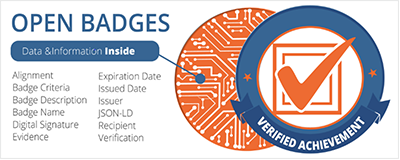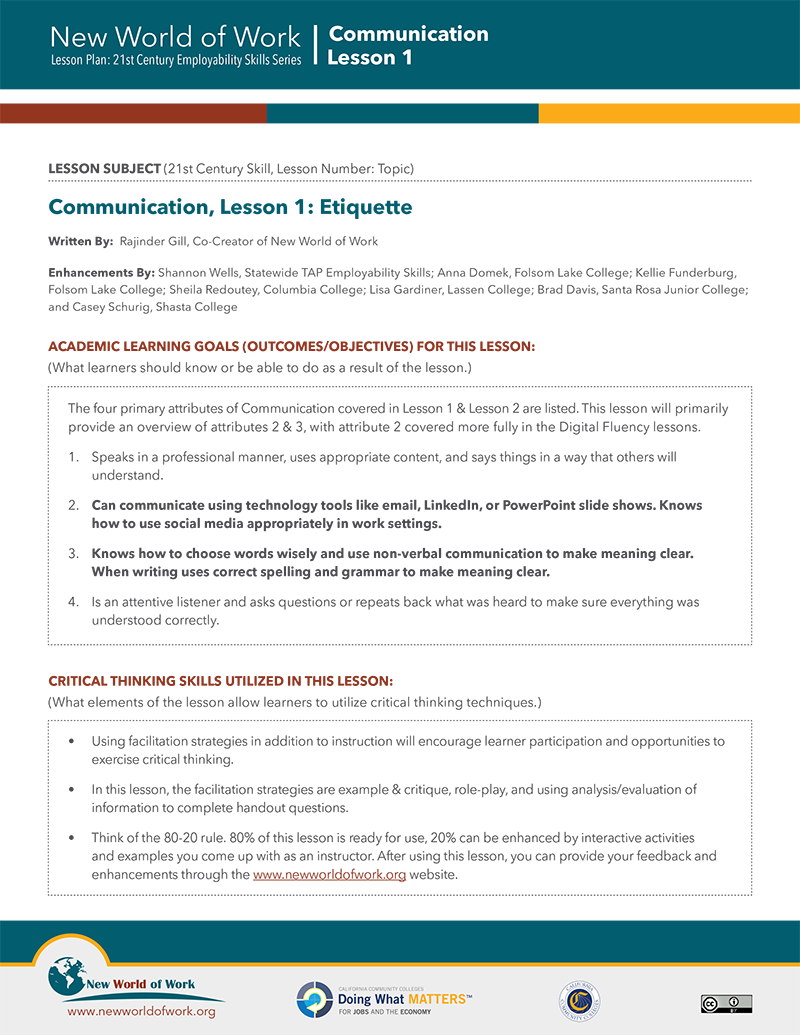How to Implement Soft-Skills Programs, Curricula, and Instruction in a Postsecondary Setting

Twenty-first-century skills (also known as noncognitive, employability, or soft skills) are increasingly viewed as essential for favorable outcomes in both education and employment. Yet employers consistently report that these abilities—such as working well with a team, problem-solving, and thriving in diverse work settings—are lacking in their employees and job applicants.
In response, postsecondary educators are looking for ways to equip graduates with recognizable competency not only in academic and career-technical skills, but also in the soft skills needed to navigate a modern, diverse, and rapidly evolving work environment.
This infographic outlines practical considerations and recommendations for developing and implementing soft-skills programs, curricula, and instruction in a postsecondary setting. It draws on an in-depth examination of a twenty-first-century employability skills (or soft-skills) training and assessment program called the New World of Work (NWoW).[1] NWOW operated at over 75 community colleges in California from 2012 to 2022.
Sample Components of a Soft-Skills Curriculum
A classroom curriculum with direct instruction in soft skills
TIP: Teach a small number of skills. For example, the NWoW curriculum covers topics such as communication, digital fluency, and self-awareness.
A concurrent, work-based learning experience
TIP: Where possible, encourage students to obtain work experiences at the same time as they receive classroom instruction. Many researchers argue that soft skills can be mastered by pairing classroom learning with work experiences where the skills can be practiced and demonstrated. Creating structure for employers to tell students about how they are doing using soft skills in the workplace could improve students’ ability to practice and reflect on those skills.
An assessment and credential-granting component (digital badges)
TIP: A digital badge is an online representation of the mastery of a skill that can be displayed on online portfolios or LinkedIn. Badges are designed to signal to employers that students have competencies in distinct soft skills. To increase badges' credibility, grant them based on assessments with a proven track record, or use psychometric analysis tools to demonstrate that your assessments are measuring skill mastery.[3]
Considerations for Your Program
The following tabs share recommendations for how programs can connect classroom learning with real-world work and structure soft-skill instruction. Click to expand.
Focus on a few skills to master
While the NWoW curriculum has a module of instruction in each of 10 distinct soft skills, staff members and students agreed that teaching all 10 in a single course was often infeasible due to the structure of the course or time constraints. Programs may benefit from limiting the scope of courses to focus on a few soft skills in depth.
Choose the class structure
Stand-alone soft skills curriculum
Pros
When the curriculum is presented as a noncredit workshop, instructors can schedule and structure their courses more nimbly.
Cons
Low attendance and completion issues may present a challenge, with students dropping in sporadically and with only a limited number completing skill assessments and badges.
Soft skills embedded into an existing curriculum
Pros
Adding explicit soft-skills instruction to an existing, credit-bearing class may help put the soft-skills content in context, and students may be motivated to show up more regularly. Additionally, programs can avoid the bureaucracy sometimes associated with creating new courses.
Cons
Time is constrained by the existing course materials, so instructors may have limitations on how many skills they can cover in a class.
It can be tricky to get employers involved enough to provide evaluations and support to students as they practice skills. To address this need, programs can require students to set up soft-skills-centered check-in meetings with their supervisors.
This structure may help students learn how they are applying specific skills, while being sensitive to employers’ or supervisors’ other demands. Of course, employers may benefit from simply being made aware of the order and timing of skills lessons. Such awareness could allow them to discuss explicitly with students the skills they are learning at a given time, and to talk about how they relate to the students’ job performance.
Here is an example of a checklist of program expectations that students can share with employers.
Checklist for employers
- Review the NWoW twenty-first-century skills listed above and assist students in creating student learning objectives. Support students as they relate their classroom learning to their work responsibilities and tasks.
- Set a regular meeting schedule to provide consistent and constructive commentary on a student's demonstration of twenty-first-century skills in a position, and that student's progress toward achieving learning objectives.
- Complete all students’ requests for employer-verified badges.
- Complete the NWoW Start/End of Semester Survey.
Employer interviews found:
Employers value credentials from reputable, familiar organizations. Practitioners in soft-skills education can draw on connections with familiar institutions and incorporate recognizable names, language, and imagery into the visual representation of credentials.
Credentials tied to work experience are considered more reliable. Programs may benefit from building ways for employers involved in work-based learning experiences to document that students are using soft skills in a work environment, such as through an “employer-verified” or “employer-endorsed” credential.
Employers prize transparency in the process used to grant credentials. To demonstrate to employers the value of credentials, credential-granting services and instructors should be able to attest to when students earned their credentials, what they learned in the process, and how each certificate can be attributed to a student’s effort and skill level. One way to convey this information is by making course-curriculum requirements, learning outcomes, and methods of accreditation publicly available. Information that authenticates a credential—such as a unique identification number—can lend further credibility.
This is an example of a digital badge a student might receive for mastery in one of the 10 soft skills.







